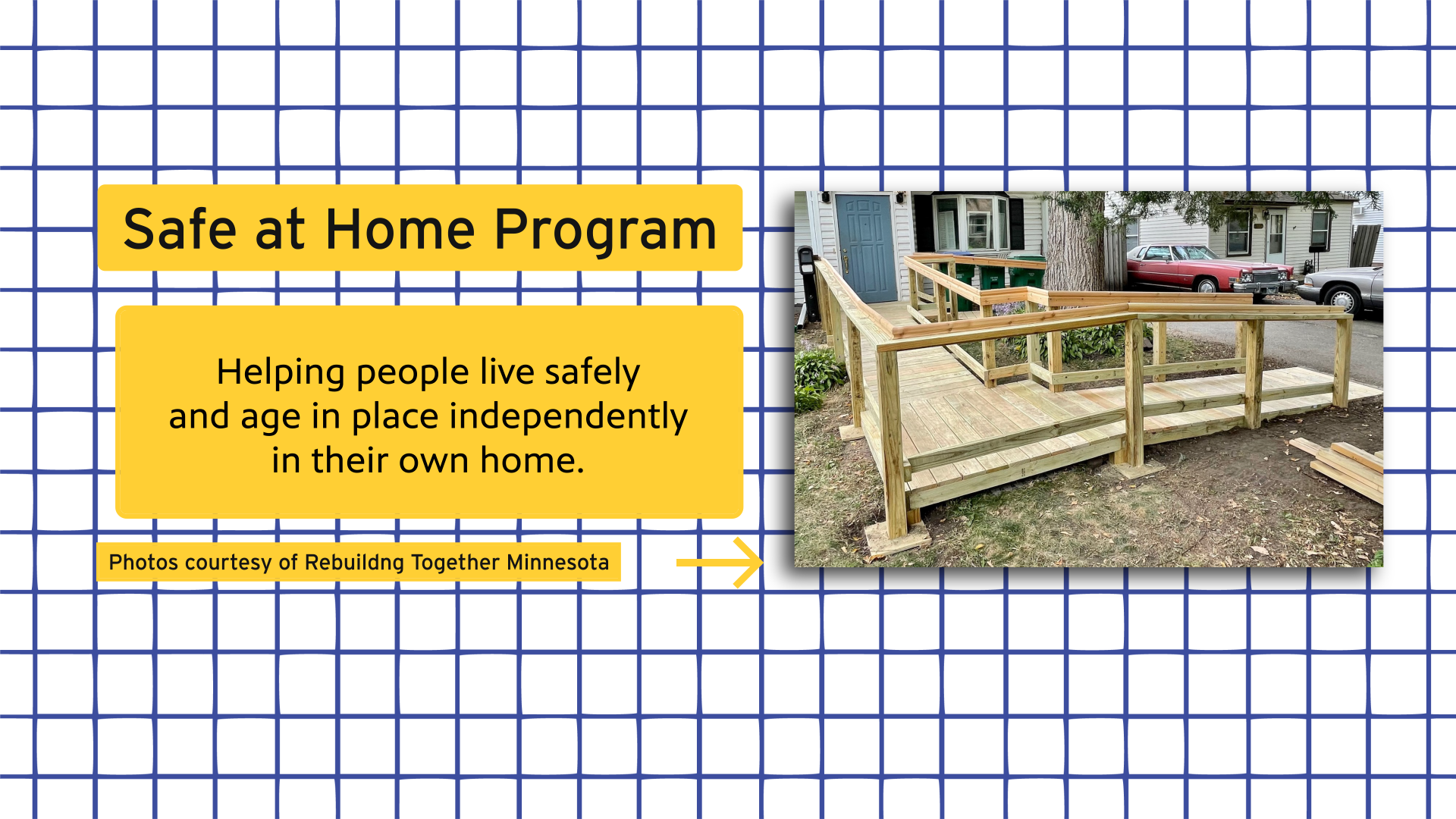Originally called Rebuilding Together Twin Cities, the organization is expanding. They've partnered with the city of Windom, where Judy Mutts lives, and opened an office there. Galen Kauffman is the program manager working out of that office, which serves Cottonwood, Jackson and Nobles counties. Drew Hagge, the development director for the city of Windom said that a housing study done in 2014 identified the need for single family and multifamily homes and residential rehab in Windom. Rebuilding Together isn't in the business of building homes, but Hagge said this partnership is meant to be part of a greater effort to address housing challenges.
"Our goal for Rebuilding Together would be a long-term, stable source of getting residential rehab done for income-qualifying individuals," he said.
Those income qualifying individuals are people who who already own a home "and then we're looking at low-income. So, our guideline is 50% of area median income," said Kathy Greiner, the executive director for Rebuilding Together Minnesota.
Then they prioritize homes with children, homes with people over the age of 55, homes that have someone living with a disability or have someone who has served or is serving in the Armed Forces.
"Our mission is repairing homes, revitalizing communities, and rebuilding lives. Also, for the homes of seniors, we look in their home and we look to see and correct the things that would might cause them to fall," said Greiner. "Our main mission is we want to keep them in that home that they already own as a stable part of the community so that they can age in place for years to come."
Rebuilding Together Minnesota relies on volunteers of various levels to complete projects ranging from minor home accessibility enhancements, like installing ramps and shower grab bars, to landscaping. "And this is the beauty. It's like people helping people, older, retired people, helping older people," said Mutts.
Steve Fresk is one of Rebuilding Together Minnesota's volunteers based in Windom. As we chatted he was in the process of installing two 18-inch shower grab bars on either end of her shower and one 24-inch grab bar on the longer wall.
All of these projects are free to the homeowner. Rebuilding Together Minnesota gets a combination of funding from private and public organizations, including from Minnesota Housing, the Department of Human Services, the Southwest Initiative Foundation and other private and individual funders.
"So, now our homeowner has got good, solid ... I weigh almost 300 pounds and I'm not even moving things here." Fresk said as he, fairly aggressively, tugged on the grab bars.
In addition to the Safe at Home installations, Rebuilding Together Minnesota also facilitates larger projects like roofing. "Those projects, we subcontract out, we love our volunteers. We love them too much to put them on a roof," said Kauffman. "We also have to subcontract out some specialty things like electrical work, plumbing work. We are a licensed contractor in Minnesota, but not for plumbing or electrical."
Minnesota Housing Commissioner Jennifer Ho said that in addition to programs like Rebuilding Together Minnesota, being open to new building technologies and looking into city zoning laws that would allow for things like accessory dwelling units, for example, can help address these housing challenges.
"Even in my lifetime, what housing looks like has changed enormously. We have smaller households and we have bigger homes," she said. "So that kind of conceptualization of what we need, what we can afford and trying to get that to line up with what we want; I think that that's something worth putting some energy into."
This story was made in partnership with the Minnesota River Area Agency on Aging. Over the past few months, Compass has been producing stories about people and programs in southwest Minnesota — and throughout the state — designed to help people age with dignity. To watch all of the stories in the series, visit www.pioneer.org/compass/agingwell.




